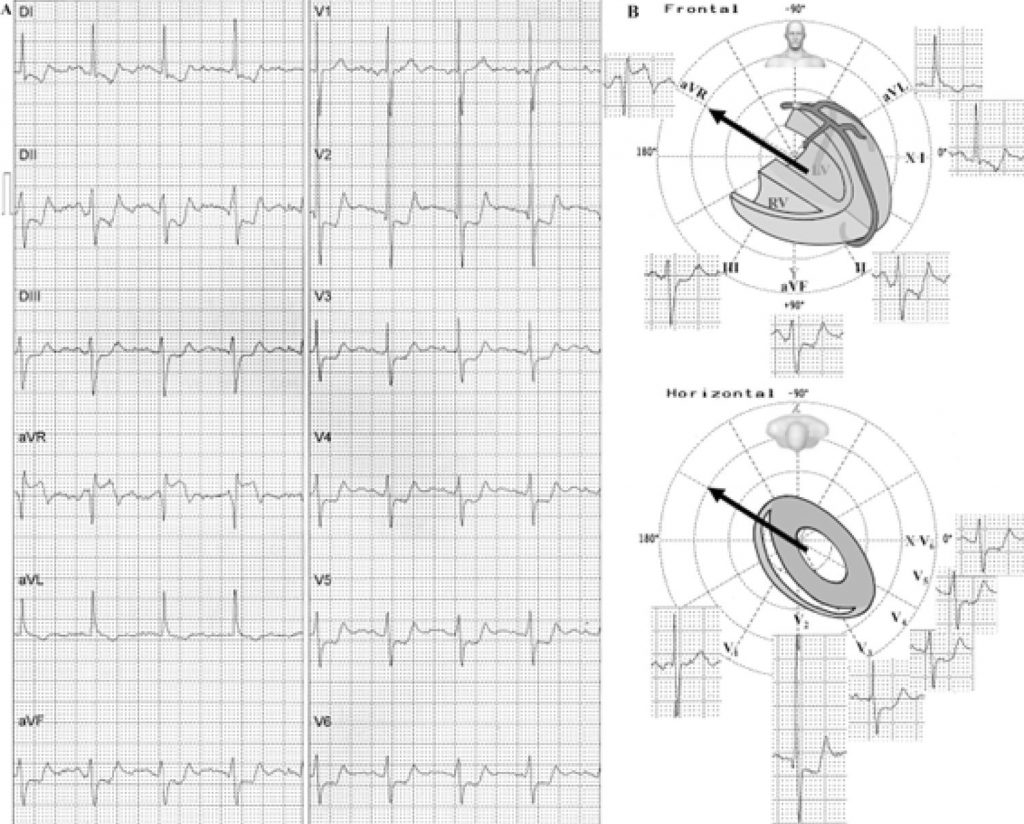Arq. Bras. Cardiol. 2020; 115(1 suppl 1): 1-5
Transient Prominent Anterior QRS Forces in Acute Left Main Coronary Artery Subocclusion: Transient Left Septal Fascicular Block
Introduction
The left main coronary artery (LMCA) originates from the left sinus of Valsalva, passes between the main pulmonary artery and the left atrial appendage before entering the coronary sulcus and bifurcates into the left anterior descending (LAD) and the left circumflex (LCX) coronary arteries. In most individuals, the LMCA supplies ≈75% of the left ventricle (LV). Significant stenosis, which may lead to stable angina and/or acute coronary syndrome, places the patient at risk of life-threatening acute left ventricular failure and malignant arrhythmias. Patient prognosis of LMCA disease can be improved with coronary artery bypass grafting (CABG). With technical improvement and effective anti-thrombotic medication, percutaneous coronary intervention (PCI) has evolved as an alternative therapeutic modality. In patients with severe LMCA disease having low to intermediate anatomic complexity, both CABG and PCI are effective methods of revascularization with comparable long-term rates of death, myocardial infarction, and stroke. Patients most suitable for LMCA stenting are those with isolated ostial/mid LMCA disease, protected LMCA disease and those who undergo an elective stenting procedure. In a recent study, 8% mortality and 8% target lesion revascularization rate during one-year follow-up was reported.
[…]
1,625

